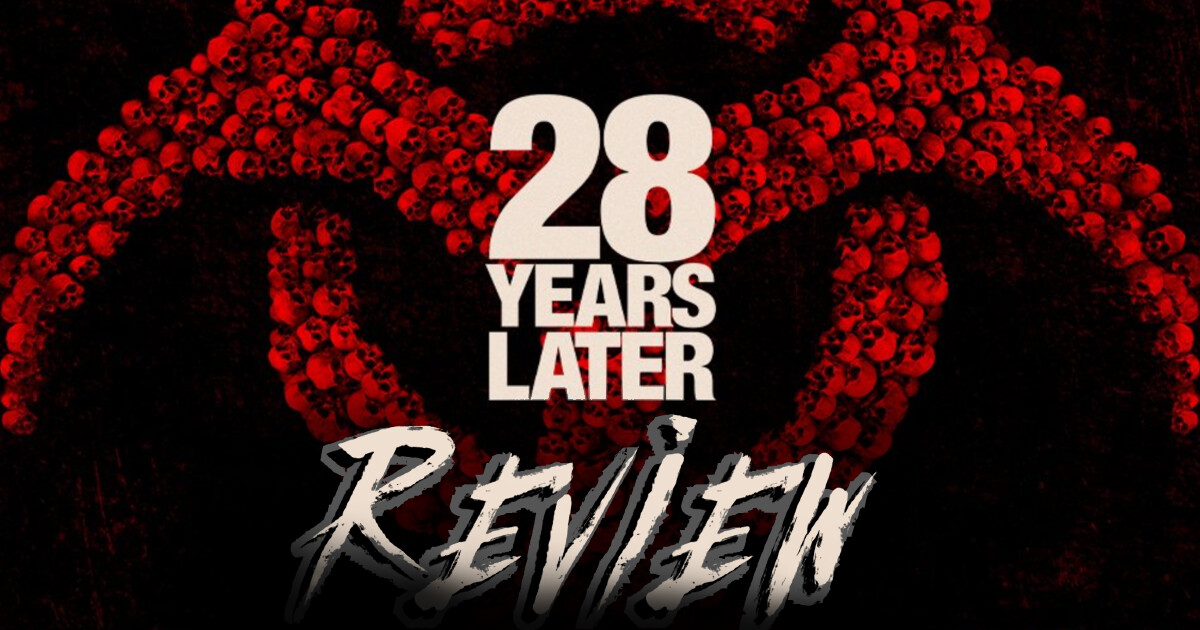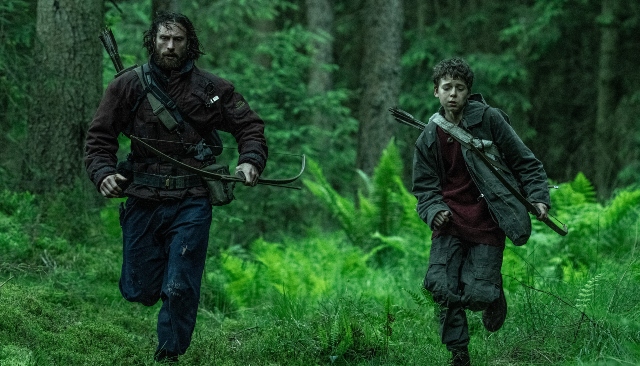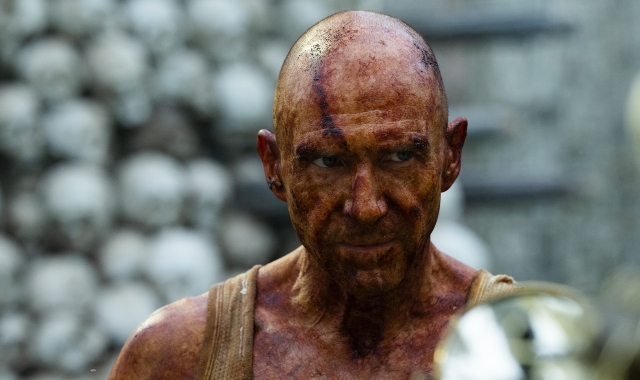’28 Years Later’ is a Challenging and Bold Sequel

28 Years Later is the strangest sequel in years. The original was gritty, dark, and had a low-quality aesthetic that added to the horror. The long-awaited sequel is far from conventional and takes numerous artistic swings. The world is lighter, the vision is more humorous, and there is a strange, heartwarming nature to the world. 28 Years Later has more in common with Sunshine than it does with its predecessor.
The film is an unapologetic Danny Boyle movie, full of genre-bending ideas and unique world-building. The biggest surprise with 28 Years Later is not that it pushes boundaries, but that it has the guts to open the world to new ideas. The film that ignited the idea behind running zombies finds a method to keep the lore evolving, taking the rage virus down a fresh path of DNA.
28 Days Later: The story
Alex Garland returns to help write this sequel for Danny Boyle, centering on a 12-year-old named Spike (Alfie Williams) living on an island cut off from the mainland. Spike lives a mostly peaceful life with his father, Jamie (Aaron Taylor-Johnson), and his ill mother, Isla (Jodie Comer). As the plot begins, we see Spike’s family life as Jamie cares for Isla, serving her breakfast. Spike brings her slices of bacon as she acts frantic and delirious.
Jamie decides to take his kid off the island to explore while hunting the infected. It’s here that we discover the newly evolved infected as the two of them walk across a glittering oceanside path to the mainland that opens up during low tide. The rage zombies have gone feral, exhibiting caveman-like qualities such as wearing almost nothing and sporting Neanderthal-style hair. The infected now have muscular and towering rage monsters called Alphas, who run fast and enjoy tearing spinal cords, like in Mortal Kombat.

The central conflict of the film arises after they return to the island. Spike makes a discovery that pushes him to distrust his father. He figures out that a doctor lives on the mainland, and he believes his father withheld this information because his father wants Isla to die. Spike then embarks on a journey to find this mysterious doctor to save his mother.
Danny Boyle’s style remains in 28 Years Later
Once they visit the mainland, Boyle‘s frantic way of communicating rage sequences remains stellar. There is a quality in the cinematography that makes their movements seem more jittery. In contrast to the original 2001 production, which utilized a low-grade Canon XL-1 Camcorder, Boyle and returning cinematographer Anthony Dod Mantle adopted the innovative use of iPhones to film the entire movie this time. Personally, I believe the camcorder style is more effective, but the movie still looks visually striking. The mainland footage is brimming with beautiful landscape shots, showcasing vibrant green hills and valleys. The iPhone footage also gives the film a surprisingly anxious texture to the horror. For example, in a sequence where Spike and his father are running from an Alpha, the iPhone has a way of making the chase appear less smooth in motion and more claustrophobic.
The musical composition is a mixed bag due to the absence of John Murphy. For this film, Boyle collaborates with the hip-hop group Young Fathers to capture the film’s sound. Unfortunately, they are unable to establish the same haunting composition as Murphy‘s landmark theme. However, similar to the trailer, the movie invokes the haunting poem “Boots” by Rudyard Kipling and is terrifyingly read like a nightmare by Taylor Holmes. Boyle uses the audio to build dread as they approach the mainland, which is a truly inspired choice.
Alex Garland’s script is guaranteed to inspire division
The script itself is surprisingly lighter in tone than 28 Days Later. The sequel almost has a Guillermo del Toro approach to horror, where beneath the terror lies fantastical innocence. While the tonal shift may feel jarring, it still serves a purpose to the narrative. For example, when we finally meet the character played by Ralph Fiennes, he is awkwardly bizarre, yet in a disarming and humorous way. He feels like a del Toro creation within an Alex Garland world. The reason for the tonal shift is likely due to the film’s childlike perspective. Much like a child’s hopeful optimism associated with youth, the film incorporates that sense of naive optimism.

The zombies remain intense, but there are attempts to create dimensions in their personalities. Instead of them feeling like mindless killing machines, they are more like animals in the wild. The rage zombies roam the wilderness like tigers stalking their prey, searching for flesh. The sequel offers the infected more humanity, showing they have a form of life on the mainland. For instance, the story suggests that the Alphas lead packs. These creative choices will be divisive among fans of the original. The 2002 movie was bleak and terrifying, and the infected were merciless killing machines. It is important to prepare for a slight shift in the status quo.
28 Years Later is a weird horror sequel, and I respect that
The performances are outstanding across the board, especially Alfie Williams as Spike. It’s challenging to find child actors who can perform naturally alongside seasoned talent like Ralph Fiennes, but Williams does it wonderfully. Jodie Comer continues to impress with every new project, and her role as Isla adds another accolade to her impressive career. Isla may not be my favorite role of hers (that belongs to Killing Eve), but it might be one of Comer‘s strongest performances as an actress.
Although 28 Years Later acts as the first part of a two-part story (possibly three parts), it feels like an unfinished idea. Similar to Mission: Impossible – Dead Reckoning Part One, the film satisfies but feels frustratingly incomplete. Adding to this, it features a wildly bonkers finale that comes out of left field. The film starts with a terrifying intensity, transitions into a heartwarming Guillermo del Toro-style narrative, and unexpectedly becomes an Edgar Wright movie.
For this reason, 28 Years Later will not be for everyone. It has more in common with Sunshine than 28 Days Later, as it pulls from various genre influences to create something unexpected. For example, Sunshine combines cerebral ideas, sci-fi adventure, survival horror, and psychological drama. Danny Boyle is like a chef playing with his food, and his culinary experimentation has my respect.
28 Years Later is now in theaters. Are you checking it out this weekend? Let us know what you think on social media @mycosmiccircus or join the Patreon and Discord to discuss with the community there!


